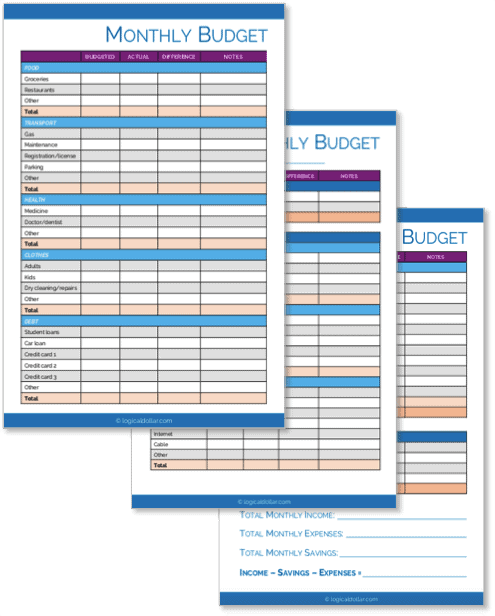If you find yourself struggling to make ends meet by the end of each month, you’re not alone. This is why working out how to drastically cut expenses can have such a massive impact on your finances
It can be far too easy for our spending habits to gradually spiral out of control. And often, by the time you realize that things need to change, it can seem impossible to start cutting expenses to the bone.
So if you’re looking for how to radically reduce your expenses and save money, this list of tips is just what you need!
You’ll see that by making some changes in your life through putting these strategies into practice, you’ll easily be able to reduce your expenses and save money, putting you on the financial path you deserve to be on.
(And working on your overall money management can be a great place to start. For this, we always recommend Personal Capital. It’s completely free with some seriously great features.)
Personal Capital
Our pick: Best money management app
Easily our choice for the best app to help you manage your money better.
Create a budget, track your spending automatically, receive personalized advice, get alerts about hidden fees and a ton more – and it’s all free.
How to drastically cut expenses
Most of these strategies for spending less involve showing you ways to cut everyday expenses in your day-to-day life.
However, there’s one step you absolutely must do before the others if you’re looking to save money: start a budget.
1. Start a budget
Starting a budget is key to any strategy that helps you live cheap. After all, you can’t limit your spending if you don’t know where your money is going.
So by starting a budget, you’ll be able to see exactly where you are financially – and exactly where changes need to be made.
This free budget template can also help to get you started.

TAKE BACK CONTROL OF YOUR FINANCES
Our free budget planner will help you to quickly and easily take control of your money – instead of it controlling you.
Get it free for a limited time!
You’ll also join our mailing list to get updates on how to manage your money – unsubscribe at any time at the end of each email.
2. Always use coupon apps when buying food
The growing number of apps that offer discounts on food costs are a godsend for those of you looking how to drastically cut expenses.
Ibotta is definitely our favorite. In a few simple steps, you can save money on a ton of different items every week. Not to mention that you’ll get $20 for free just for signing up.
And not only is it faster than going through newspapers to cut out coupons, it’s way easier.
Ibotta
Free sign-up bonus: $20
Ibotta’s a completely free app that gives you cash back on what you’re buying already – groceries, medicine, clothes and more.
In fact, users make $150 per year on average – not including your free $20 welcome bonus – with over $682 million having been paid out, so you know Ibotta is definitely legit.
3. Always use a shopping list
You should never step foot inside a supermarket without a shopping list.
Otherwise, the temptation is far too great to get things that you “think you need” (but don’t), “think we’ve run out of” (you haven’t) or “look nice” (when there are hundreds of other things you could cook for half the price).
By listing exactly what you need, you’ll only spend exactly what you need – no more, no less.
4. Meal plan
Meal planning is a pretty common piece of advice for saving money – but it’s because it works.
By planning your meals for the week – and then shopping at the supermarket based on this – you’ll be able to make sure that there’s always enough food in the house. Meaning you’re:
- Way less likely to resort to getting takeout
- Going to avoid food wastage (and throwing away money)
- Not going to be tempted to go back to the supermarket to spend more money on “something you forgot” (and then grab a few other things while you’re there)
You can certainly meal plan yourself but if you know that you’re the kind of person who really can’t be bothered with that sort of preparation, there’s a super cheap alternative.
$5 Meal Plan is a website that charges only $5 per month to send you a full four-week meal plan. And that includes all the recipes plus your shopping list for the month.
It seriously saves so much time – and you’ll definitely save more than $5 in just a week by meal planning, let alone a month!
To see if $5 Meal Plan is for you, sign up here for a FREE two-week trial to get two weeks of meal plans, recipes and shopping lists at no cost!
5. Take lunch to work
We all know the advice from personal finance gurus to stop buying $12 salads. But the annoying thing is that they’re right!
Sure, it’s convenient to just pop down to the cafe around the corner and grab your lunch. However, have you ever stopped and calculated how much this is costing you?
For example, a daily $12 salad will cost you over $3,000 per year – which is a huge chunk of change!
So take the extra time to get your food ready for your workday, including snacks. You’ll be healthier and so will your bank balance.
Related: Why Living Stingy Could Be The Key To Achieving All Your Financial Goals
6. Buy non-perishable items in bulk
Buying in bulk can be an easy way to save some money on food costs.
Things like rice, pasta and beans can all be used in easy, filling, frugal meals. And they get even cheaper if you buy a lot of them at once!

7. Buy generic brands
Brand loyalty costs money and has no effect on the taste or quality of what you’re eating.
So don’t stick with one brand of product just because “you’ve always done it”. There’s often no difference at all between them and the generic version – except for the price usually being substantially less.
Of course, this doesn’t only apply to food. Kitchen aids like plastic wrap and prescription medicine are identical no matter which one you buy.
But the common theme is always: generic saves you cash!

MANAGE YOUR MONEY LIKE A BOSS
Managing your money effectively can literally change your life. And starting a budget using our budget planner is the first step towards you doing just that.
Get it free for a limited time!
You’ll also join our mailing list to get updates on how to manage your money – unsubscribe at any time at the end of each email.
8. Stop eating out
We’ve made this point above, but it’s worth repeating.
If you’re looking for how to drastically cut expenses, you need to stop buying takeout.
Meal planning is a great way to avoid doing this as you’ll always have the ingredients on hand for a meal.
Meal prepping is even better as you can just grab the pre-prepared meal when you’re tempted to order in.
And the savings can be enormous, depending on how often you do this. After all, the average American household spends about $3,000 a year dining out.
Making this an easy win for helping you to spend less.
Related: How to Live Without a Job: 8 Steps to Thrive
9. Don’t shop when hungry
A simple tip this time, but one that has surprising cost benefits.
Research shows that if you go shopping while hungry – even when shopping for non-food items – you’re likely to spend 70% more than if you go when your stomach isn’t rumbling.
So have a snack before hitting the shops. It could save you more than you expect!

Bills/subscriptions
If you’re looking for how to drastically cut expenses, it should be clear that recurring expenses – like bills or other subscriptions – are a great way to save money on a long term basis.
Whether you work to reduce them or simply cut them altogether, you’ll save money not only this month but every month going forward.
And if you’re wondering how you can lower bills fast, there are a bunch of ways to do this before taking the steps suggested below.
In particular, look at those bills that are behavior-based and see how you can change your behavior to spend less in those areas.
For example:
- Do your water bills seem a bit excessive? Don’t do loads of washing unless the washing machine is full. Same for the dishwasher.
- Heating bills too high? Turn down the heater, put on an extra sweater and see if there’s a reason why your house is extra cold.
- I rented a place once that was freezing, and it turned out that the windows weren’t sealed properly. I managed to fix it myself cheaply and the lack of cold air coming in had a massive effect on my heating bills.
With some small changes to your life, simple things like this can make a huge difference to your spending.
10. Call to negotiate with your bill provider
Not enough people realize that you can actually negotiate with bill providers, especially if you’ve been a good customer to them.
It costs them far more to get a new customer than to retain you as an existing client – it’s why you’re always transferred to a company’s retention team whenever you try to close an account anywhere.
So use this knowledge to your advantage. Get some information on any better rates offered by your provider’s competitors and threaten to switch unless they beat or match it.
If you’re polite but calm, this technique works wonders in reducing your bills.
You can also use an app like Truebill to do this for you. Find out more from our Truebill review.

11. Shop around
If your contract in anything is coming up for renewal soon, make sure you shop around before signing on again for another year.
You’ll likely find great deals elsewhere for new customers. Then you can either switch to take advantage of the new deal – or use this information to negotiate like in the previous point!
12. Change to an annual payment
Many bill providers offer a discount if you pay for one year or even more of the costs upfront.
(By the way, the same can also work for rent, although this is obviously a much larger upfront cost.)
Even if you can’t find information online on whether this is an option, give them a call and see what “special deal” they can offer if you say you’re willing to do this (and are able to cover the costs).
13. Cut bills/subscriptions you don’t need
It’s amazing how many people keep subscriptions they don’t use, simply because they “forgot to cancel” or just can’t be bothered. This is just throwing away money!
One way to do this is with Trim. It’s a completely FREE app that will automatically go through your bills and cancel the ones you’re not actually using.
It can also automatically negotiate with bill providers on your behalf to reduce things like your internet and cable bills.
Download Trim for free here to start saving money immediately.

What bills can I cut to save money?
The bills you should be cutting if you’re looking for how to drastically cut expenses are those that definitely fall into the “wants” pile.
This could be things like newspapers or magazines (everything is online for free – mostly – anyway), as well as TV subscriptions like Netflix.
It’s true that they’re fun to have. But your ultimate goal here has to be to save money. And you can always re-activate a subscription in future once you find yourself getting back on the right money management path.
14. Cancel your gym membership
If you’re looking to really reduce expenses and save money, cancelling your gym membership can be a great way to do this.
(Especially if you’re one of the more than two-thirds of people that have gym memberships but don’t actually go.)
There are hundreds of free exercise options online. YouTube and Instagram in particular are goldmines.
And while many of these exercises don’t need equipment, if you really, truly feel you need it (and have the space) to meet your fitness goals, grab some secondhand from eBay or Craigslist.
15. Switch to a prepaid cell phone
Did you know that almost half of all cell phone users in the US spend $100 per month or more on their phones and another 13% pay at least $200 per month.
This makes this a great area in which you can save literally thousands of dollars per year.
And one super simple way to do this is to switch to a prepaid cell phone, so you’re only paying for what you use.
Republic Wireless, for example, charges only $15 for unlimited talk and text and then $5 for every GB of data you use. Which, in the time of WiFi being everywhere, shouldn’t be that much.
And by getting off a phone contract means you’re not locked in to continue paying for things you’re likely not using.
Republic Wireless
Our pick: Best prepaid phone plans
16. Don’t upgrade your phone just because it’s offered
Many phone companies keep you as customers by offering a “free upgrade” every two years if you stick with your current contract – or maybe with a “very small increase”.
Firstly, ask yourself if you really need a new phone every two years?
Secondly, do the math. Divide the cost of buying the phone (if you actually “need” it) by 24 months to see the monthly cost of it. Then look at the previous point for how much you could be paying for usage costs if you weren’t on the contract.
In the vast majority of cases, it would be way less than if you take the upgrade. And over two years (or whatever your phone provider’s upgrade cycle is), those savings are really going to add up.
Related: Leasing a Phone vs Buying It: Which Is Best For You?

Accommodation
17. Refinance your mortgage
Lowering the interest rate of your mortgage can literally save you tens of thousands of dollars over the life of your loan.
(And it’s worth noting that when looking for how to drastically cut expenses, massive savings like this are going to save you from having to put some of the other tips into practice.)
This also has the flow-on effect of significantly lowering your monthly repayments, helping you to immediately save a ton each month.
If you think you could be eligible for this, get in touch with some lending institutions to see what they can offer.
18. Move to a smaller place
While this is clearly going to be easier if you rent rather than own your home, it’s worth asking yourself if you really need all the space you live in.
Not only do you have to pay for the space itself, but larger homes incur higher heating/cooling, energy costs and property taxes. They’re also the worst way to save money on furniture given you’re going to be paying for filling that space with stuff.
(Unless you’re able to get your furniture for free…)
On the other hand, moving somewhere that has only the space you actually need can save you thousands of dollars in living costs.
Related: What’s the Cheapest Way to Live: Where to Move Abroad and 21 Other Cheap Living Tips
19. Move in with family
If this is an option for you, moving in with family can also be a great way to save a lot of money on your accommodation costs.
It doesn’t have to be forever but it’s definitely worth considering doing this for a short period, especially if you need some time and savings to get back on your feet.
You could even repay them with a nice meal that you’ve made from your excellent meal planning in an earlier step!

20. Get a housemate
If you found yourself nodding along to the point above about you maybe having more space than you need, why not rent it out by getting a housemate?
This can be an easy strategy for getting someone else to help pay your rent or mortgage.
21. Advertise spare rooms on Airbnb
If you want something similar to a housemate but with the flexibility to choose not to have someone there all the time, try making spare rooms available on Airbnb.
This can be particularly lucrative if you live in a high tourism area or near somewhere that holds events.
You could even make your entire house or apartment available if you have someone nearby you can stay with from time to time.
Living costs
22. Install energy efficient light bulbs
While LED light bulbs cost more to buy upfront than regular bulbs, the cost savings over time will make this more than worth it.
After all, did you know that a LED bulb that replaces a normal (i.e. 60-watt incandescent) bulb will save $132 in electricity over the life of the bulb?
That’s equivalent to more than 25,000 hours or 17 years of using a bulb four hours a day!

23. Turn the heating/cooling down
Heating and cooling costs can really eat into a household budget, but you can save a good portion of your heating costs by setting the thermostat at what’s considered the ideal temperature of 68F (20C).
Similarly, cost-efficient cooling can be done by setting air conditioners to 75F (24C).
And, as a pro tip, you can save even more money by installing a programmable thermostat. That way, you can cut your expenses further by setting the temperature at night to be cooler in winter and warmer in summer than during the day.
24. Unplug unused devices
Have you heard of “vampire power”? While it sounds cool, it’s actually referring to the power that your electronics are sucking up even when not in use or when turned off. Which, of course, equals wasted money.
Unplugging them – or, better, buying a smart power strip that shuts down electronics when they’re in standby mode – can save you a ton of cash.
In fact, experts believe that standby power consumption in an average home ranges from 5% to 10% of your household energy consumption.
How to reduce expenses and save money on transport costs
Transportation costs can end up being a much bigger part of your budget than you may expect.
After all, it’s not simply the costs involved in buying a car and adding gas. It’s also maintenance, insurance, registration, parking…the list goes on.
So if you’re considering how to drastically cut expenses, re-examining your transport spending can be a great technique for achieving this.
And much like the other types of expenses, cutting costs here depends on changing your behavior.
As you’ll see below, you may be used to using a car for convenience purposes.
But with some small changes to your travel habits, you’ll see that you can really make savings in this area.
And as an added bonus, many of them are better for your health and the environment!
25. Use public transport
As mentioned above, owning and operating a car can undoubtedly be expensive.
Which is why, if you have access to public transport, it can be a godsend to your wallet.
If you commute to or from a major city center, it can also be far more convenient. Not only do you generally avoid the traffic involved with commuting by car, having a bus or train drop you off in the middle of the city is much better than circling the block for hours, looking for a park!
(And paying for the gas to do so…)

26. Walk or bike everywhere
Even better, walk or take a bike to where you need to go.
Personally, I haven’t owned a car in eight years, including during some pretty harsh winters.
My second hand bike has gotten me to and from work, the supermarket and everywhere else I’ve needed to go, often in less time than it takes to drive. After all, I can park it more or less anywhere and it’s completely free to do so.
27. Downgrade to a one-car (or no-car) household
If your household owns two cars and you’re still wondering how to live on a budget, it’s time to stop and think about whether you actually need both of them.
Sure, it’s probably more convenient. But with some adjusting of your schedules, you may find that you’ll manage with just one car – or even none at all!
28. Only own “all the car” you actually need
Another thing to consider with your car ownership is whether you really need the car you have.
Maybe it’s a 4×4 but the furthest you go off road is into your driveway. Or it’s a utility and you haven’t transported anything since you moved houses four years ago.
Bigger cars equal bigger bills to pay. So if you don’t need it, consider downgrading to one that fits your lifestyle more.
29. Carpool/Rideshare
With so many rideshare companies now operating, you can easily find a way to get from A to B on the odd occasions when you really do need a car. Companies like Uber will work well here, but you can also rent cars by hour these days if needed.
And the hourly rates of these companies are undoubtedly less than the cost of actually owning the car yourself.
30. Keep your car tires properly inflated
Most gas stations offer free air so, once every month or so, stop by one to check the air pressure in your tires.
By inflating them properly, you can really improve your gas mileage. Which, in turn, cuts your transport costs further.

Entertainment
31. Find free entertainment options
If you’re looking for how to drastically cut expenses, your entertainment budget will need to be severely limited.
But this definitely doesn’t have to stop you from actually enjoying yourself.
There are a ton of things to do that are both fun and free – or almost free. For example, you can
- Go for a hike
- Find a free class in your area
- Go star gazing
- Try a new sport at a free “come and try” day
- Go the library and grab some new books (or get some free books mailed to you)
- Wander around a local market
Or, if you want to try some free things at home, why not:
- Have a movie night
- Invite your friends around for a potluck dinner
- Learn a new skill on YouTube
- Have a home spa day
32. Limit paid organized children’s activities
Your kids almost certainly don’t have to do soccer, ballet, violin and choir – especially when it’s costing you the world in fees.
So it’s time for them to make some cuts too, by limiting them to only one activity each week.
And if you’re really looking to cut your expenses further, consider cutting them back to no paid activities.
Your kids may not like it at first, but they’ll be fine. And will have a far less stressed parent when they’re able to stretch their budget further because of the fees they’ve saved by not paying for that activity.
33. Learn to do your own beauty/grooming activities
Hairdresser’s costs for a haircut and color, the nail technician’s price for a manicure and pedicure, the barber’s fees for your beard – these can all really add up, especially if you have them done regularly.
So consider learning how to do these yourself if you’re looking for how to drastically cut expenses. YouTube in particular will show you all sorts of techniques for looking like you’ve just stepped out of a salon – for a fraction of the price.

Clothing
34. Shop secondhand
Second hand stores can be a real treasure trove when looking for clothes. It’s also a great strategy to follow if you’re working on being fashionable on a budget.
Depending on the area where you find the store, you may even be able to find a good range of designer clothes, if that’s your thing.
But when you start to see the array of clothes on offer at many of these stores, you’ll wonder why you ever bought new in the first place. For example, on a number of occasions, I’ve seen some classic blazers in thrift stores that were barely worn. These were a lifesaver when I was trying to dress professionally on a budget in my first job after college!
35. Organize a clothes swap
A clothes swap is when you get a bunch of people together who all bring clothes they no longer want and then everyone can pick through all the clothes to find new (for them) items of clothing.
It’s a really great way to spend an afternoon if you’re looking for fun things to do with friends – and you can definitely get some great new pieces for your closet for free!
36. Don’t buy clothes unless you absolutely need them
If you’re trying to reduce expenses and save money, then you absolutely shouldn’t be buying new clothes unless you really, truly need them.
This can be a hard habit for some people to break. Start by avoiding wandering through shopping malls when you’re bored and unsubscribe from all email newsletters from clothing brands.
By limiting yourself to only what’s already in your closet – or, at a stretch, only shopping at second hand stores – you’ll be going a long way towards limiting your spending.

Debt
37. Focus on paying off debt
Debt is the number one thing ruining most people’s financial situation.
And if you’re looking for how to cut drastically expenses, you really need to do all you can to get out of debt. After all, those repayments – and any interest you’re accruing – could be put to far better use.
The faster you pay it off, the less interest you’ll pay over time, which means more money saved.
Related: What is a Good Credit Score Range – and How to Get a Score In It?
How do I pay off debt if I live paycheck to paycheck?
It can definitely be difficult to pay off your debt if things are already tight.
If this is you, it makes it extra important for you to implement as many of the strategies in this article as possible.
Cutting expenses to the bone will make it far easier for you to use all those savings towards paying off your debt.
And while it will take a lot of work at first, just remember that all your efforts now are helping your future self really breathe a lot easier.
38. Consolidate your student loans
If your student loans are locked in to a high interest rate, look into whether you’re able to consolidate any of them.
By combining them into a lower interest rate, you’ll be able to save on significantly reduced monthly payments and possibly even pay off your loans faster. In fact, this can be one of the easiest steps you can take if you have big saving goals, like if you’re trying to save $10,000 in a year.

39. Consolidate your other debts with a balance transfer
This is a great option for lowering the interest rates that apply to your other debts, as many balance transfer cards offer 0% APR for 18 to 24 months.
Just make sure the balance transfer fees are low enough and that you use the interest-free period to pay off as much of the loan as possible.
Also, check that the terms that apply after the interest-free period are reasonable, as you don’t want to be stuck in loan conditions later on that are even worse than the ones you’re in now.
40. Automatic debt repayment
Many companies, especially those that manage student loans, provide interest rate reductions if you sign up for automatic repayments.
Not only does this mean that you pay less interest, but it also ensures that you won’t pay any late fees or miss a payment.
Other ways to cut everyday expenses
41. Stop bad spending habits
The methods in this article will absolutely go a long way if you’re looking for how to drastically cut expenses.
But they can only work in conjunction with you exercising more positive spending habits. Otherwise, all your hard work in reducing your spending will be for nothing.
So really think about how you got to the point of spending too much and whether there’s anything you can do personally to stop this happening again.

This could include tricks like only going shopping with the exact cash you need or having to check with someone before you buy something over a certain amount.
Ultimately, you need to prove to yourself that the short term thrill of getting something new is nothing compared to the longer term relief in having your finances under control.
You may also be interested in: 11 Great Ways to Save Money Without a Bank Account
42. Avoid lifestyle creep
This is related to the last point but is worth mentioning separately.
Lifestyle creep – or “keeping up with the Joneses” – often involves people thinking their “wants” are actually “needs”.
If you’ve ever caught yourself buying something because “you deserve it” rather than choosing to save that money – then I’m sorry to say that you’ve also been a victim of this phenomenon.
There are a range of tricks online for how to avoid this, but one of my favorites is to pretend that your salary is actually a certain amount less than it is.
For example, by pretending that you only earn 90% of what you actually do, you can automatically put the “non-earned” (wink wink) money towards your financial goals, like paying off your debt or contributing to your retirement fund.
Whatever trick you end up using, lifestyle creep can be brutal for those trying to save more, whether you’re on a six-figure salary or something closer to $40,000 a year. But by closely examining your needs vs your wants, there’s no reason why you can’t take control of your spending and stop yourself before lifestyle creep takes over.
Related: The Personal Financial Plan Example You Can Use To Reach Your Financial Goals
43. Get your partner on the same page
If you have a partner, it’s always good to confirm that they’re on the same page in terms of your financial goals and money management.
It can be heart breaking – and wallet breaking – to find out all your hard work is down the drain because of some poor financial decisions they may have made.
This happens more often than we’d like to believe, so it’s good for any relationship to be transparent about your financial objectives and your money habits, both good and bad.
That way, you can come up with a shared plan of attack to make sure you’re both working at drastically cutting expenses together.
Find out more about: 13 Proven Tips to Save $1,000 a Month
How do I cut my monthly expenses?
1. List your expenses
The crucial part of this is to list every single one of your expenses in your budget.
Go through your bank statements, gather up your receipts – whatever it takes to make sure you’re accurately including every single cost that you incurred last month.
As we’re looking for how to drastically cut expenses, we need to see just where you can actually make those cuts.
Related: How to Get Rich From Nothing: The One Strategy That’s Proven to Work
2. Separate the wants and needs
One of the biggest problems that people have when choosing how to spend their money is not distinguishing properly between wants and needs.
We all know logically what these are: needs are the things you would struggle to survive without and wants include everything else.
But when many of us seem to think that going out for dinner once a week is a need or that you’d die without Netflix…then maybe we need to get our financial priorities in order.
So take a good, hard look at your list of expenses to categorize them into wants and needs. Just writing a simple “W” or “N” next to each one is enough.
You’re going to have to be brutally honest with yourself though on what you really, truly can live without, as not doing this will make it almost impossible for you to cut your spending as much as you should be.

3. Wants – it’s time for cutting expenses to the bone
You knew this was coming…time to significantly reduce your spending on your wants.
The rest of this article has a ton of tips for how to do this, but you should also take the time to consider this now as you’re looking at your list of wants.
You’ll probably start to see pretty quickly where your spending could be reduced. Maybe your takeout costs are higher than you realized or you have a gym membership for a gym that you haven’t step foot inside in three months.
Whatever it is, start to think about really limiting your wants, as this is where you’re going to more easily be able to drastically cut expenses.
4. See how to reduce expenses and save money on your needs
While focusing on the wants can be easier, there are almost always ways for us to cut back on our needs as well.
In fact, it’s our needs that often take up the biggest chunks of our budget. This means that spending less on these areas can have the most effect when looking to reduce expenses and increase your savings rate.
This article has a ton of ways to show you how to drastically cut expenses on your needs, including things like accommodation and food costs, which should definitely help you reduce your spending in these areas.
Related: 17 Best Financial Planning Quotes to Inspire Your Money Makeover
What are normal monthly expenses?
The Bureau of Labor Statistics states that the average annual expenses of most households are divided roughly as follows:
- Housing took up about 33% of the household’s annual expenditures
- Transportation costs ate up around 16% of spending
- Food costs sat at approximately 13% of total expenses
- Personal insurance and pensions were around 12% of yearly costs
- Healthcare expenses were just over 8% of annual spending
- Apparel and services consisted of 3% of household expenses annually
So you may be looking at your budget and wondering whether or not you really are spending too much in certain budget categories.
This isn’t helped by the fact that most people don’t like to talk about money with others, making it hard to actually know what are normal monthly expenses.
And this is why this list can be a great guide for where your spending should be on these categories.
That said, it absolutely doesn’t mean that further cuts can’t be made on these areas or others in your own budget.

For example, food costs are one of the biggest expenses for any household. So finding ways to choose cheap food options can be a great way to reduce your overall spending.
No one’s saying you can’t eat (trust us: we love food). But there are always ways to spend more strategically on food so that you end up spending less.
You may not even realize how much your food choices can cause your expenses to add up. But just grabbing one snack here and getting takeout occasionally there can have a huge impact on your budget.
Which is why putting a few spending techniques in place can really make a difference in terms of working out how to get rid of unnecessary expenses.
What are examples of flexible expenses?
Flexible expenses are costs that can easily be changed, reduced or eliminated. Examples would be things like entertainment and clothing. However, even certain food costs can fall under this – for example, your grocery bill is a flexible expense because the amount spent can vary depending on what you buy.
Similarly, something like a cable bill is also a flexible expense, as while you may incur it monthly, you only do so because of your subscription. Cancel your subscription and the cost is gone.
What does all this mean in practice? When it comes to working out what to cut from your budget or how to reduce expenses and save money, limiting your flexible expenses is going to be key.
One good way to figure out if something is a want or a need is to ask yourself if it’s a “flexible expense”.
So keep this in mind when going through your list of expenses and perhaps add a mark next to those that could be considered flexible. These are likely to be the ones that you can easily cut back on.
Final thoughts on how to drastically cut expenses
Figuring out just how to drastically cut expenses when you’re desperate to turn your finances around can be tough.
But the strategies on this list are proven to actually work. That is, if you’re looking for how to reduce expenses and save money, putting these tips into action in your life are going to have a clear impact on your spending.
In particular, if you find yourself living paycheck to paycheck or not being able to pay off your debt, implementing even some of these ideas to radically reduce your expenses is going to put you on a far stronger financial path.
It’s not always going to be easy working out what to cut from your budget. But when cutting expenses to the bone could literally change your life, it’s clear that it’s worth doing – even just for long enough to get you back on the right track.

READY FOR MORE?
Join thousands of subscribers in getting regular tips in your inbox on how to take control of your finances and save more money – and, for a limited time, get our free budget planner as a gift!
You’ll also join our mailing list to get updates on how to manage your money – unsubscribe at any time at the end of each email.








